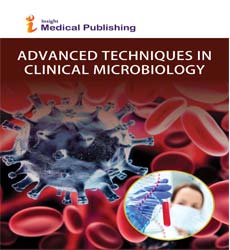Evaluation of diagnostic microbiology capacity and barriers in testing for HIV and TB at peripheral hospital-based laboratories in Oyo-State, Nigeria
Abstract
Tuberculosis (TB) (caused by Mycobacterium tuberculosis) and human immunodeficiency virus (HIV) (a Lentivirus) are two interrelated infectious diseases that continue to threaten public health in several parts of the world. In Nigeria, a maximum of 52,000 people died from HIV and TB in 2017. The prevalence of HIV and TB co-infection in Nigeria currently stands around 19.1% which suggests that the two diseases are still a burden on the nationâ??s health. Improved diagnostic testing at peripheral hospitals is therefore required to facilitate case detection which will reduce the incidence of the two diseases. Thus, this study sought to evaluate the diagnostic microbiology capacity and barriers in testing for HIV and TB at peripheral government-owned secondary hospital-based laboratories in Oyo State, Nigeria. The study used a descriptive cross-sectional design to evaluate 17 government-owned secondary hospital-based laboratories in Oyo State. A WHO laboratory assessment tool was used to evaluate the study laboratories. Diagnostic capacity was measured on a scale of 100-point in which scores â?¤ 49% were rated low, fair (50â??79%), and good (â?¥80%). Barriers to diagnosis were summarized in proportions. Criteria used in measuring diagnostic capacity included availability of potent reagent and testing kits, competence of laboratory scientist to perform the test, available standard operating procedure, internal and external quality assessment, availability and functionality of equipment which were scored. A score of 0, 50 and 100 was assigned to no, partial and yes responses respectively and average score was calculated.
Open Access Journals
- Aquaculture & Veterinary Science
- Chemistry & Chemical Sciences
- Clinical Sciences
- Engineering
- General Science
- Genetics & Molecular Biology
- Health Care & Nursing
- Immunology & Microbiology
- Materials Science
- Mathematics & Physics
- Medical Sciences
- Neurology & Psychiatry
- Oncology & Cancer Science
- Pharmaceutical Sciences
